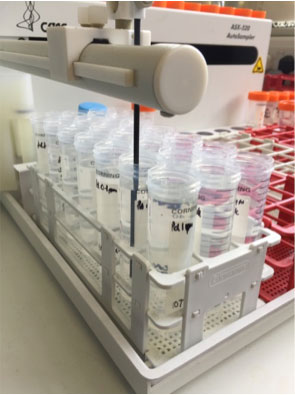United States Pharmacopeia (USP) chapters 232 Elemental Impurities-Limits and 233 Elemental Impurities-Procedures state limits and guidelines for monitoring a number of elemental impurities in products.
 Traces of metals that can be found in finished products are referred to as elemental impurities. These impurities can occur from metal catalysts, reagents used during synthesis and the process vessels used in manufacturing. This can cause major issues from the effectiveness of a drug to it becoming toxic for ingestion and causing side effects. Here is when the analysis of these impurities becomes vital into determining the presence of trace metals. Many industries can be affected by this such as pharmaceutical, cosmetic, food and drink.
Traces of metals that can be found in finished products are referred to as elemental impurities. These impurities can occur from metal catalysts, reagents used during synthesis and the process vessels used in manufacturing. This can cause major issues from the effectiveness of a drug to it becoming toxic for ingestion and causing side effects. Here is when the analysis of these impurities becomes vital into determining the presence of trace metals. Many industries can be affected by this such as pharmaceutical, cosmetic, food and drink.
At Exeter Analytical we demonstrate compliance to USP 232 and 233. using inductively coupled plasma (ICP) optical emission spectroscopy (ICP-OES) we are able to assess the 24 key elements stated in USP guidelines – Ag, As, Au, Ba, Cd, Co, Cr, Cu, Hg, Ir, Li, Mo, Ni, Os, Pb, Pd, Pt, Rh, Ru, Sb, Se, Sn, Tl, and V. Our detection limits can go down to less than 1ppm in sample and our instrument allows us to detect down to 10ppb. All our samples are routinely run at multiple wavelengths to identify any potential interference that could affect the quality of our data. Our enhanced ICP-OES conditions enable low sensitivity for As, Hg, S and P analysis.
You can find further information at www.exeteranalytical.co.uk/usp-232-233/ or contact Exeter Analytical on +44-(0)2476-323223 or email us at info@exeteranalytical.co.uk




